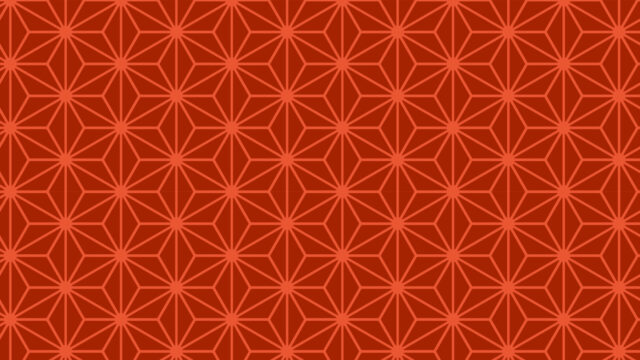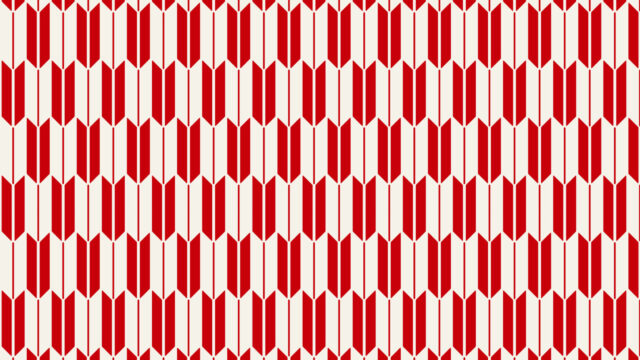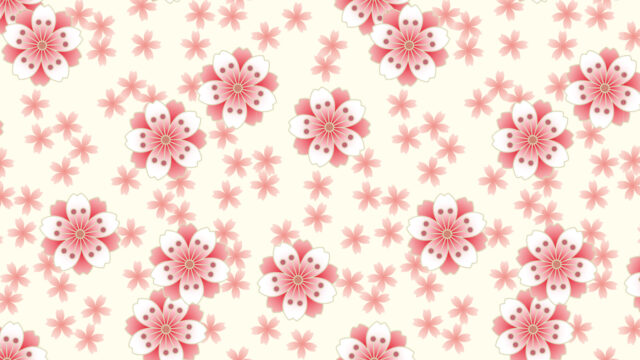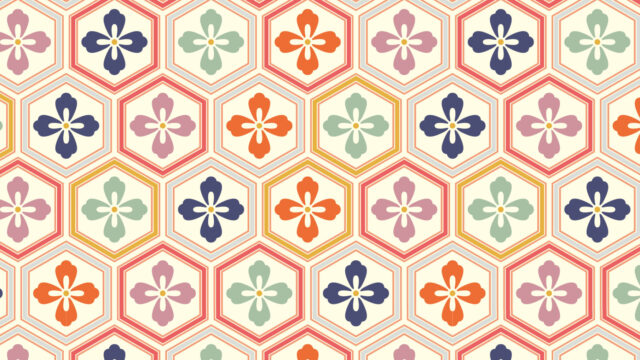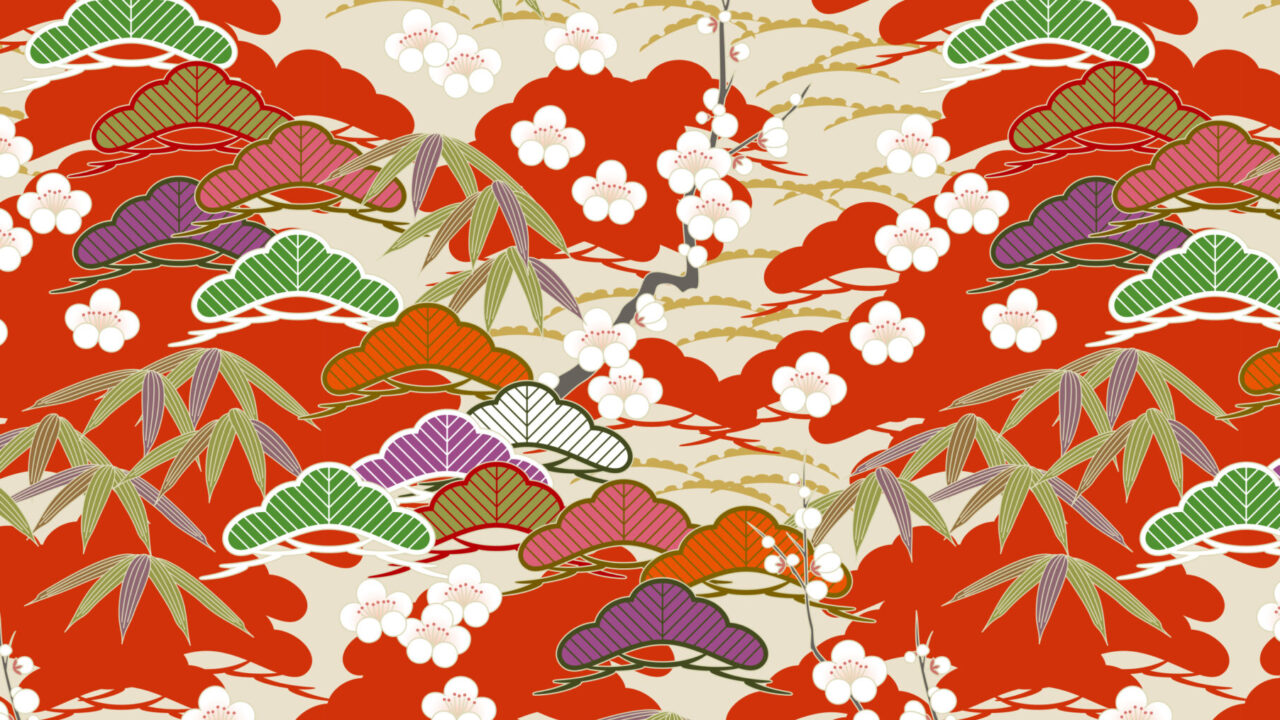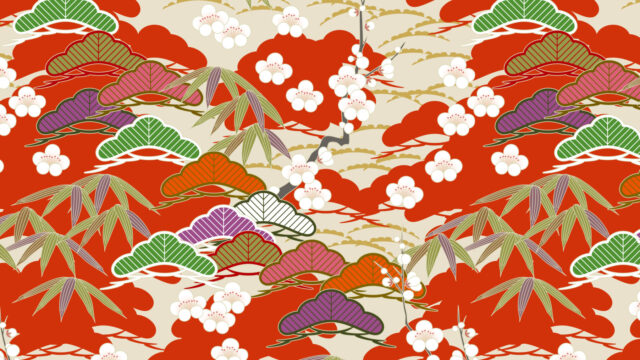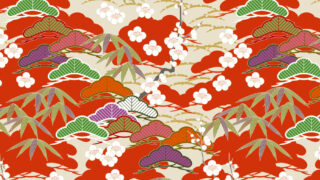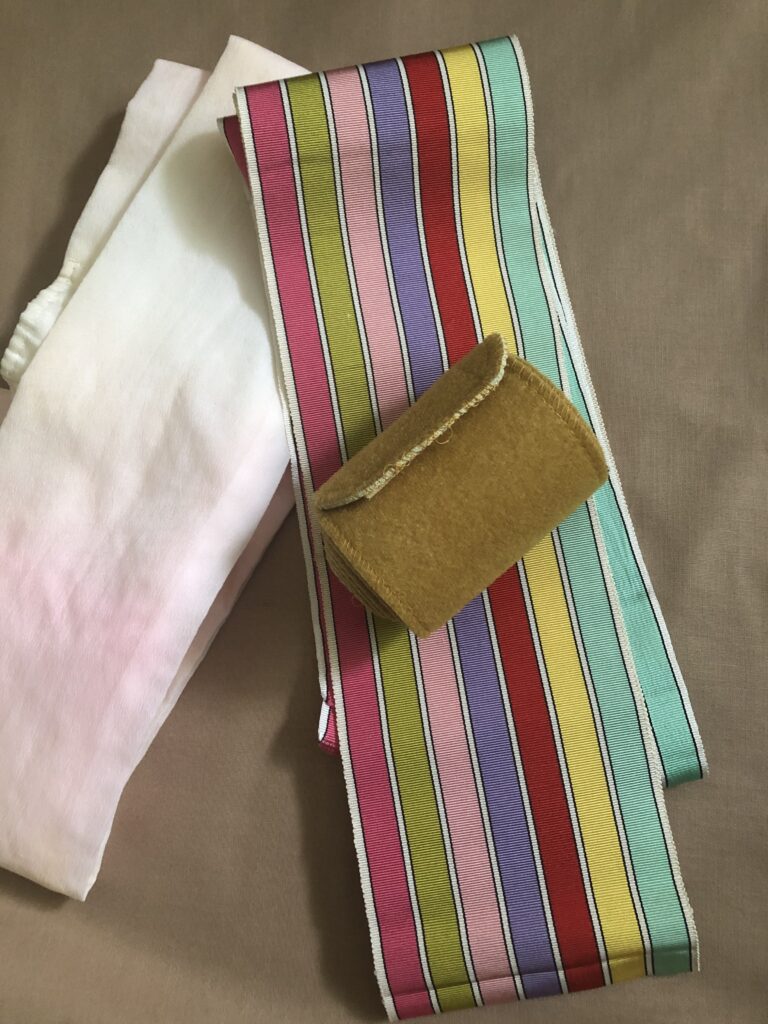
伊達締め
伊達締めとは一般的には、衿あわせをくずさないようにむな紐をした後に付けます。
幅 約10㎝ 長さ 約220㎝
中央部分は硬く手先部分は柔らかく出来ています。
種類は、博多織、ナイロン素材、マジックベルトなどがあります。
博多織
とても綺麗な色柄で、お値段でしめ心地が本当に違うそうです。
ナイロン素材
中心部分の硬い所の横からシャーリングゴムが入っているのが一般的です。ポリエステルなので、洗濯可能。
およそ1000円~2000円ぐらいです。
マジックベルト
マジックテープでとめるので二重巻きになりません。結ばなくてよいです。およそ1000円ぐらい~
伊達締めは幅があるので暑い夏対策にメッシュ素材もあります。着物はどうしても何枚も重ねて着るので、最初から夏用と書いているものやメッシュ素材のものを年間通して使用するものとして購入。もありだと思います。
※お値段は参考程度です。
使用する本数
基本は長襦袢と着物に1本づつの計2本。
衿元さえ崩れなければ良いので、むな紐しか使わないとか、伊達締めしか使わない。長襦袢だけ伊達締めとか、着物だけ伊達締めなど、自由にできます。
私は、日舞の練習の時にはむな紐だけで伊達締めしてなかったです。衿元くずれたら身八つ口から左手入れて中の衿を持ち、右手も衿持ち横にひぱってから後ろのおはしょり引っ張って、前のおはしょり引っ張るって感じでなおしてました。(適当な自己流です。おすすめとかではありません。)
崩れないことは大事ですが、きつかったり暑かったりしたら着物面倒になっちゃいますよね。自分の体感を大切にされて、減らせるなら減して楽しんでください。
Datejime
The datejime is used to maintain the shape of the collar.
width about 10 cm
length about 220 cm
The middle part of the datejime is hard and the rest is soft .
There are Hakataori (博多織), nylon, magic belts, etc.
hakataori(博多織)
It has very beautiful colors and patterns. It seems to be comfortable to use depending on the price.
Nylon fabric
generally, it has shirring rubber in the center. It is polyester, so it can be washed.
Prices range from about 1000 yen to 2000 yen.
magic belts
I wont not tie it because I am going to fasten it with Velcro.
It costs about 1000 yen or more.
The datejime is wide, so there is mesh material for hot summer. Recently, there are many hot days. It is even hotter because I wear many pieces of cloth in the kimono. Therefore, there is also the idea of mesh material datejime all year round.
※The price is just for reference.
Number of used
Basically, one on the nagajyuban(長襦袢) and one on the kimono.
I wish I could keep the collar shape, so if it is okay, you do not have to use it.
If the string hurts or it is hot wear a kimono , I think some people do not like wearing a kimono. Please cherish your senses and enjoy your kimono.
使い方 How to use
長襦袢 nagajyuban
長襦袢の時、博多織、ナイロン素材はどちらとも中心部分の硬い所を胸下(アンダーバスト)にあてます。
Place the center hard part on the under bust.
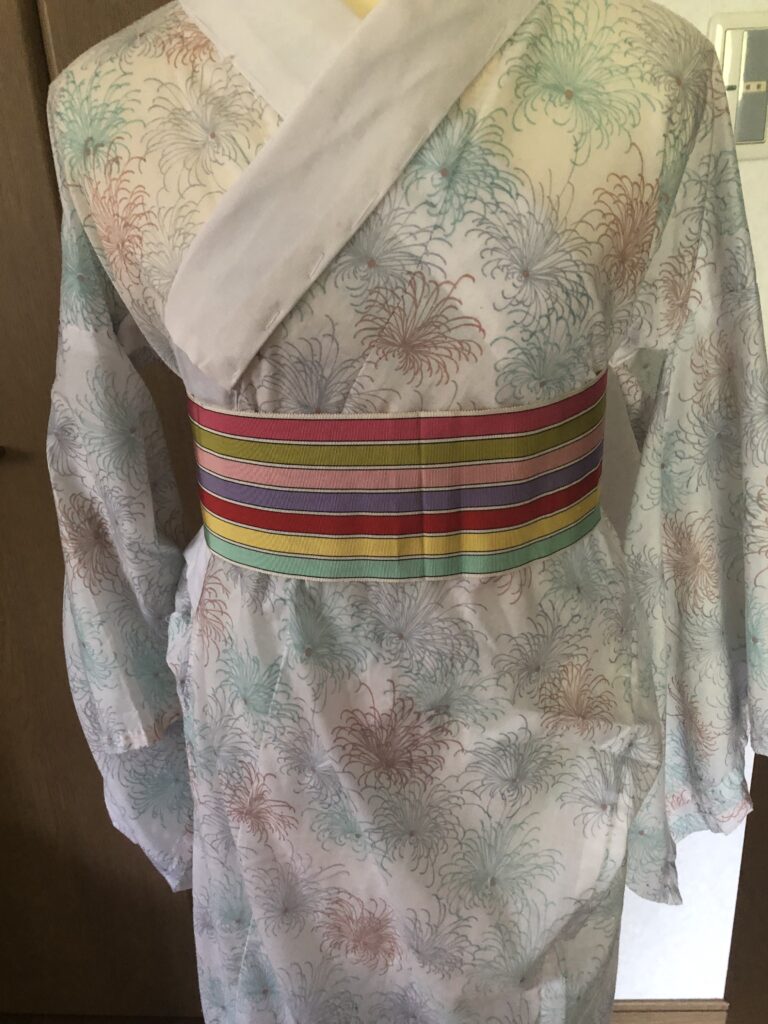
背中にまわしていって交差させて
Intersects at the back
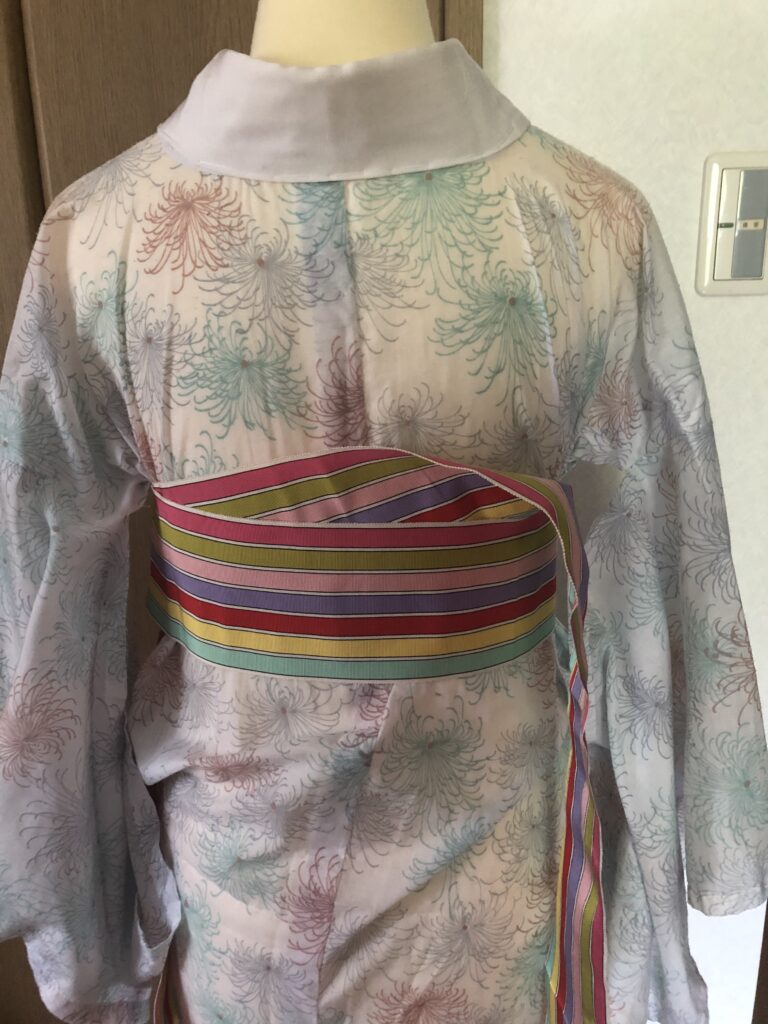
上になったら方を下の伊達締めにひっくり返してそわせます。
You cross it and turn it upside down.
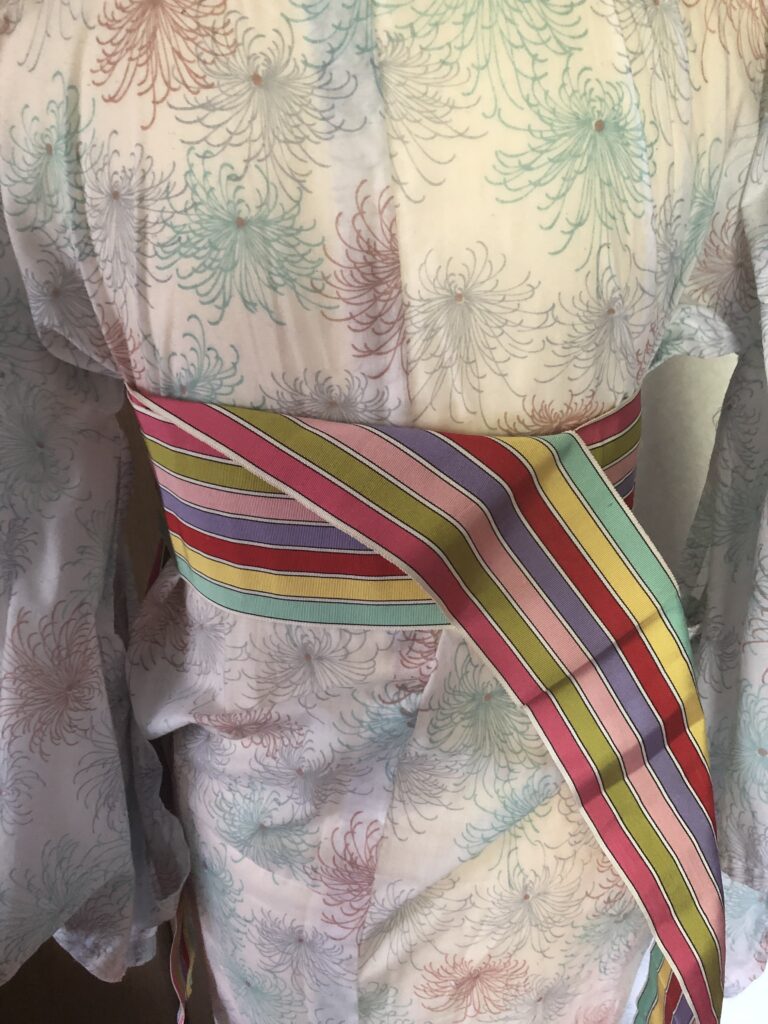
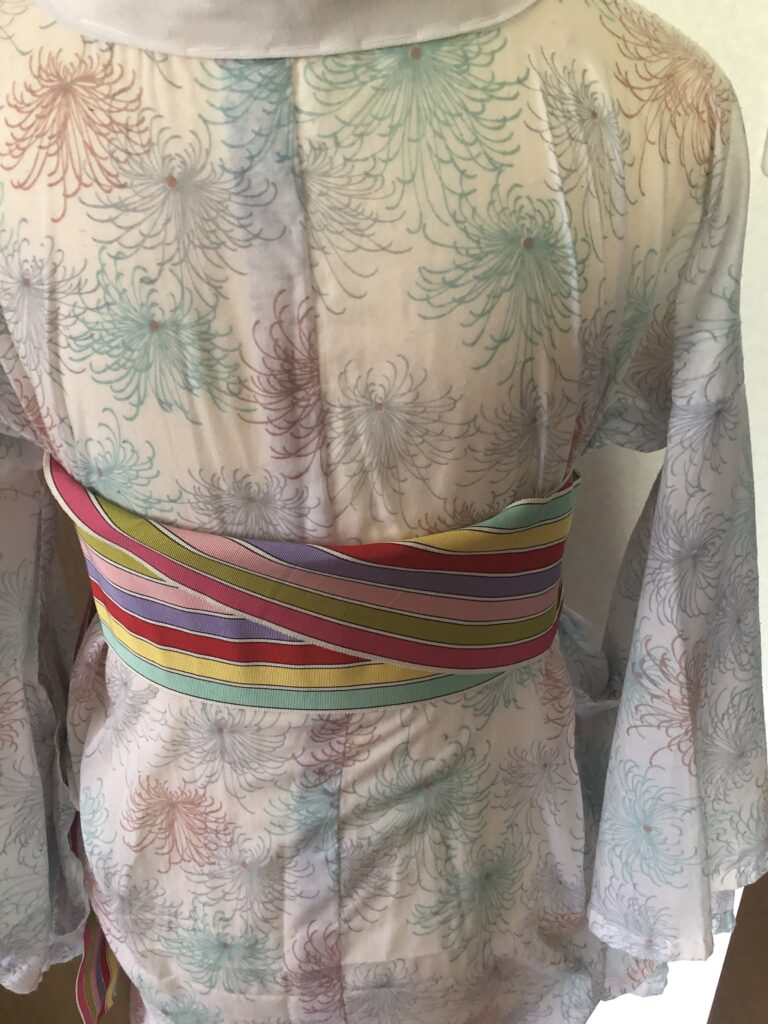
こうすると後ろがゴロゴロしないです。ですが、上手くしまらないなどあるなら交差させただけで何もせず前にまわしてOK。大事なのは、衿元の形を崩さないことだけなので!
結ぶのは、胃のところだと苦しいとなることもあるので、左右どちらかでした方がよいかもです。
If you do this , datejime feel refreshed. You do not have to do it when you can not do it well.The only thing that matters is that the collar dose not lose its shape.
Do not tie it around your stomach. Either side of your body is better.
・二回まいて反対に持っていって紐の端はクルクルと紐に巻く
Wrap the datejime twice and bring to the other side. Wrap the end of the datejime.
一回目 Once
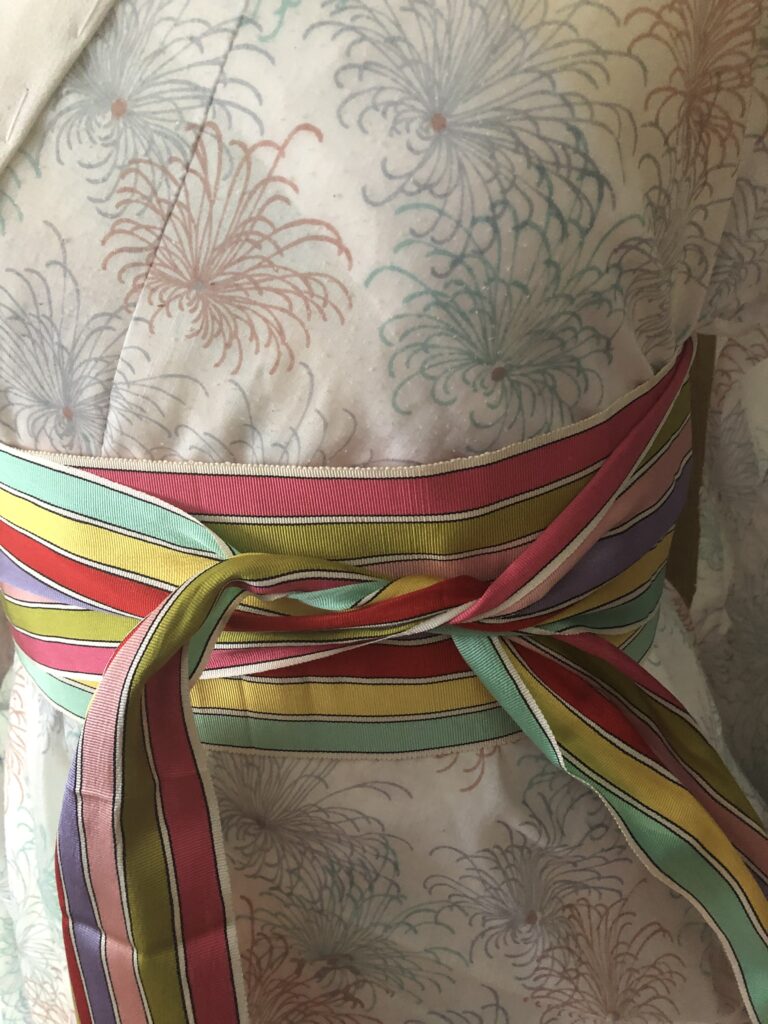
二回目 twice
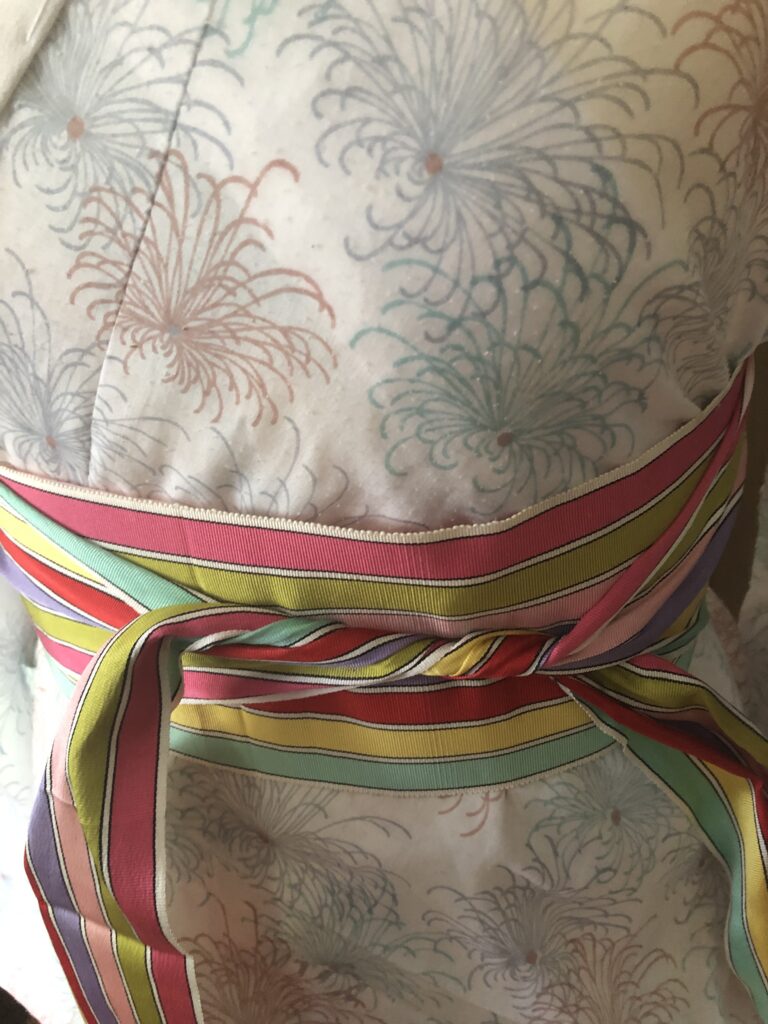
反対に持っていく途中の状態(※)
I am taking it the other way around, halfway(※)
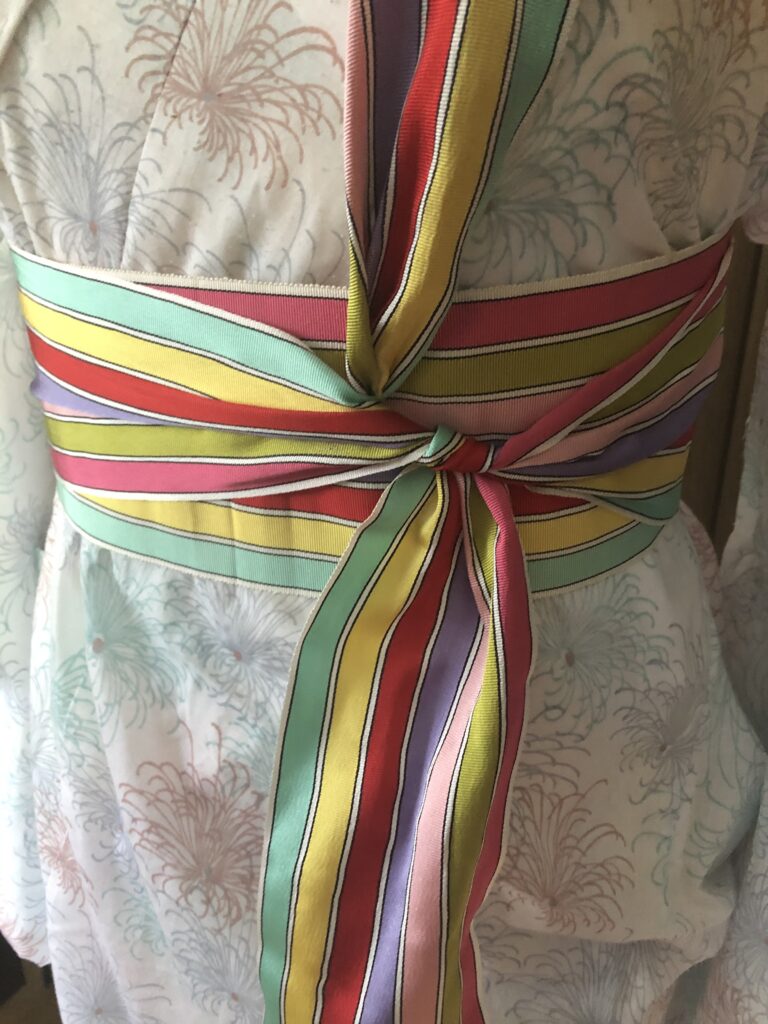
端っこも2回ほど紐に巻きつけましょう。
Wrap the end of the datejime twice.
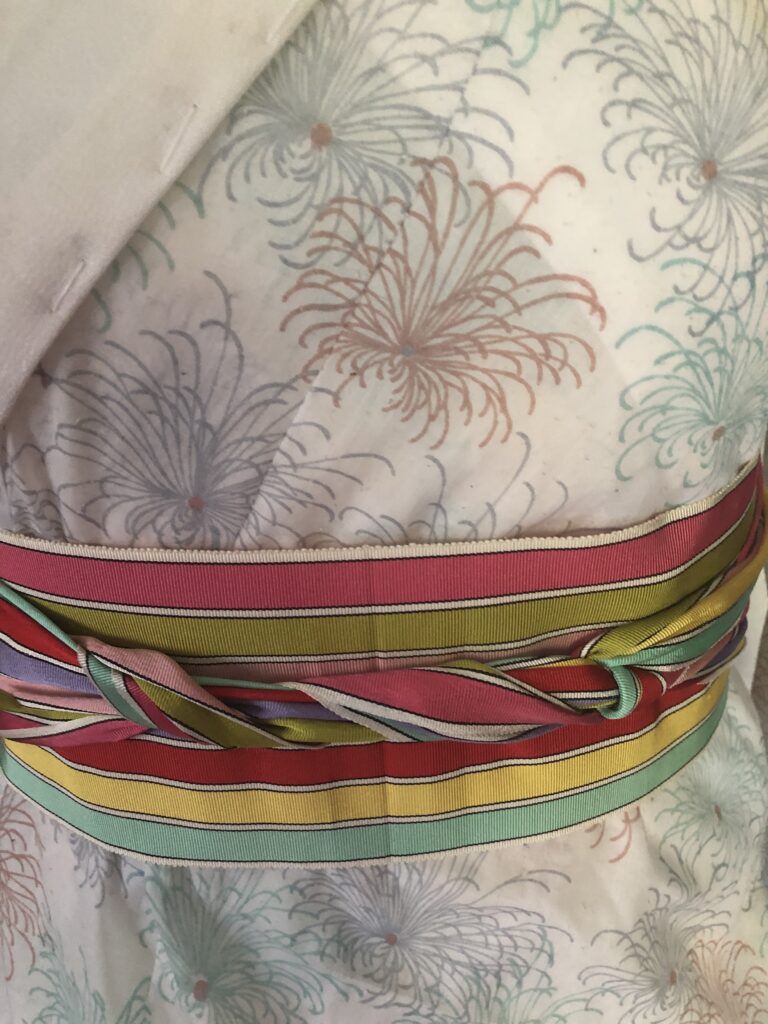
・二回巻いて、長襦袢との間にいれるやり方
Wrap it twice and put the end of the datejime between the nagajyuban(長襦袢)and the datejime.
二回巻いてギュッとした状態(※と同じ状態)
Wrap the datejime twice and tie it up.(※the same)
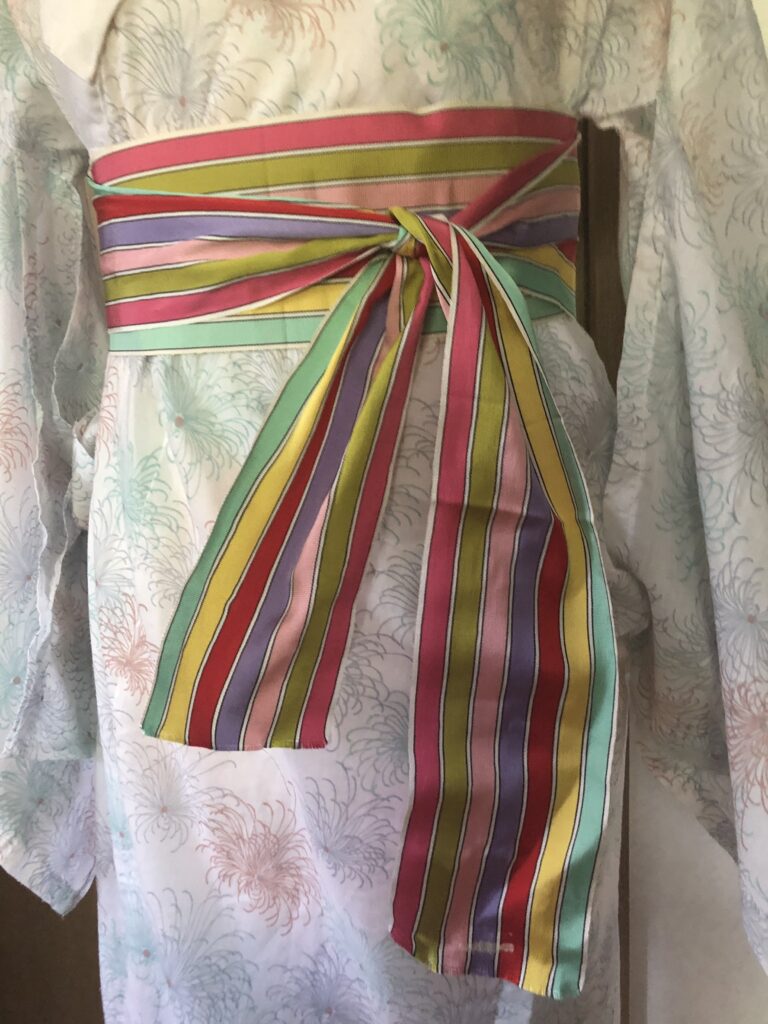
伊達締めの端からクルクル巻いていきます。
Roll the end of the datejime.
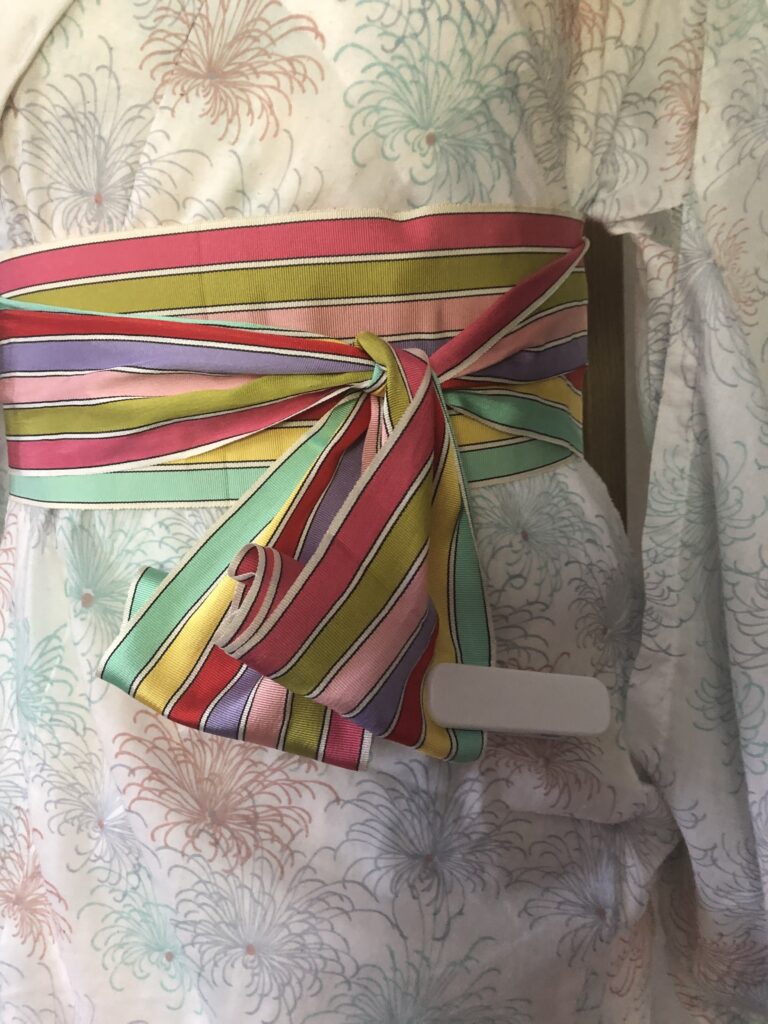
それを、長襦袢と伊達締めの間に下から収納。
Store rolled datejime from below between magajyuban(長襦袢) and datejime.
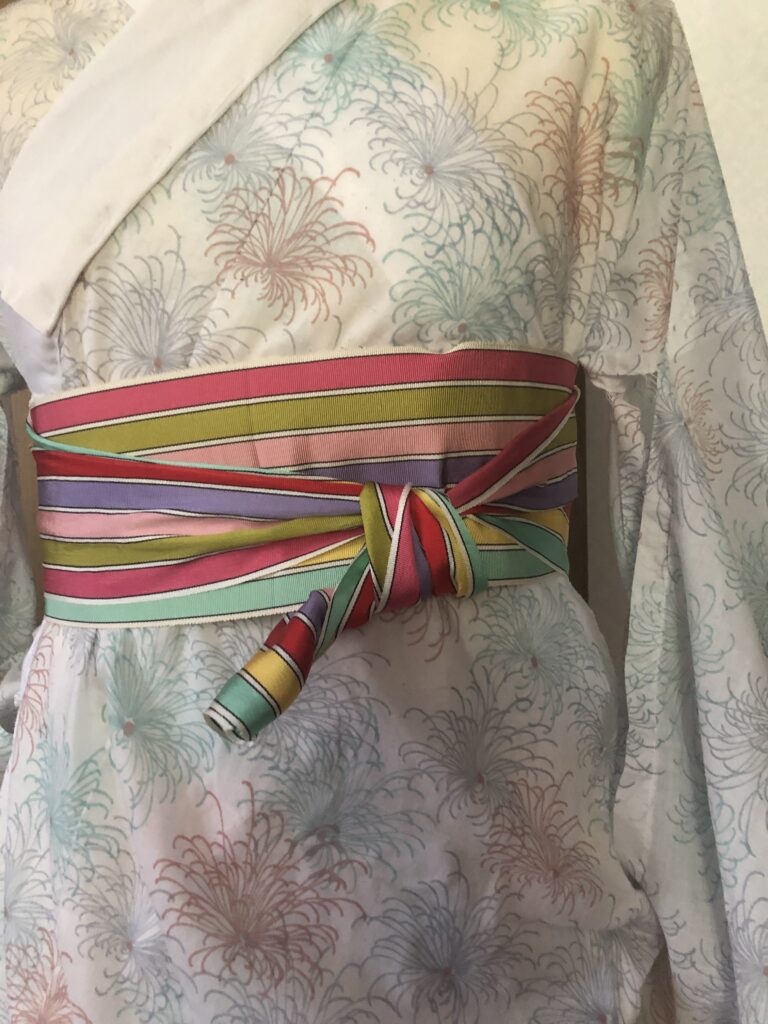
出来上がり
completion
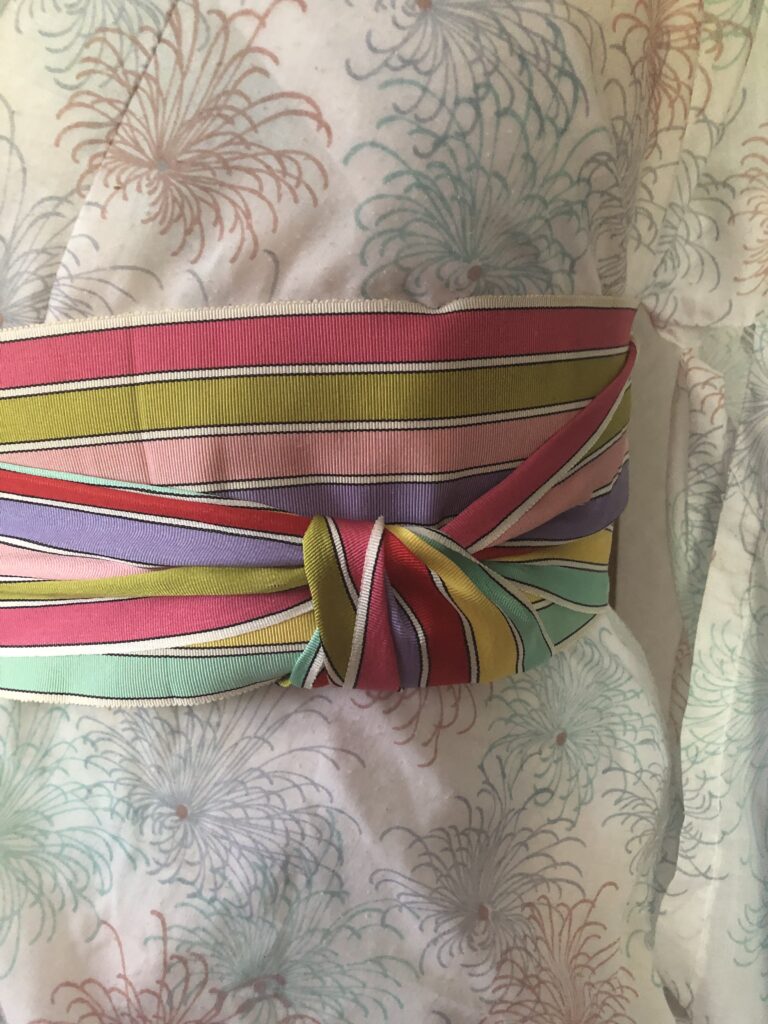
クルクルして上から収納途中
Roll the datejime and store it from the top .
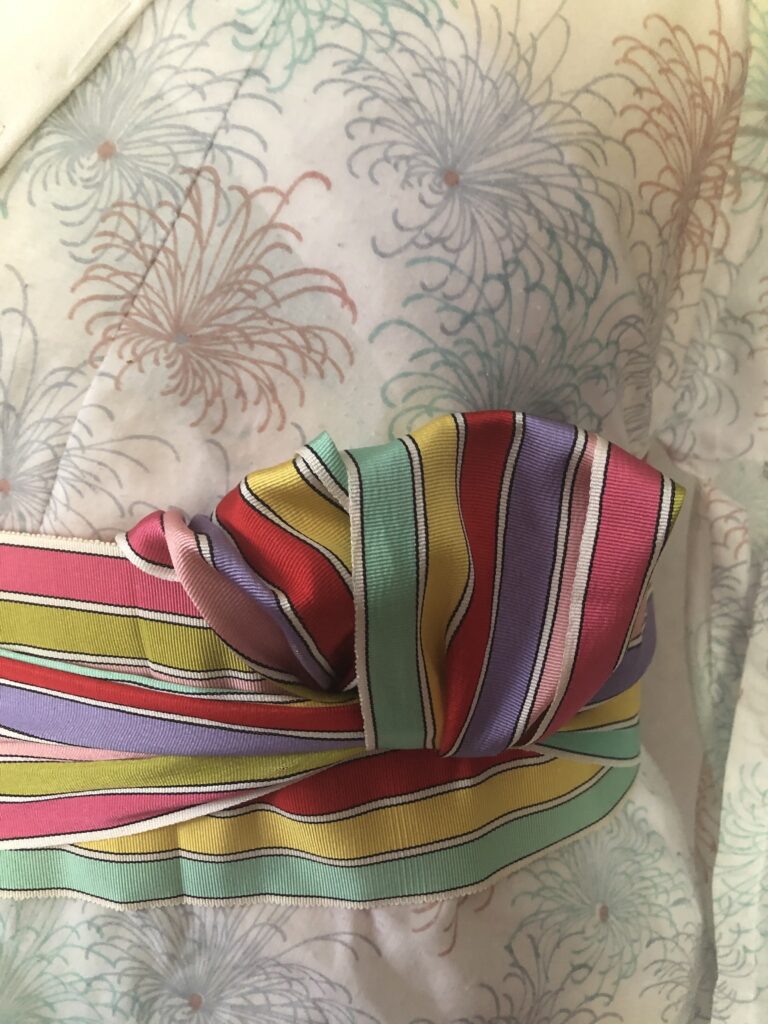
収納状態
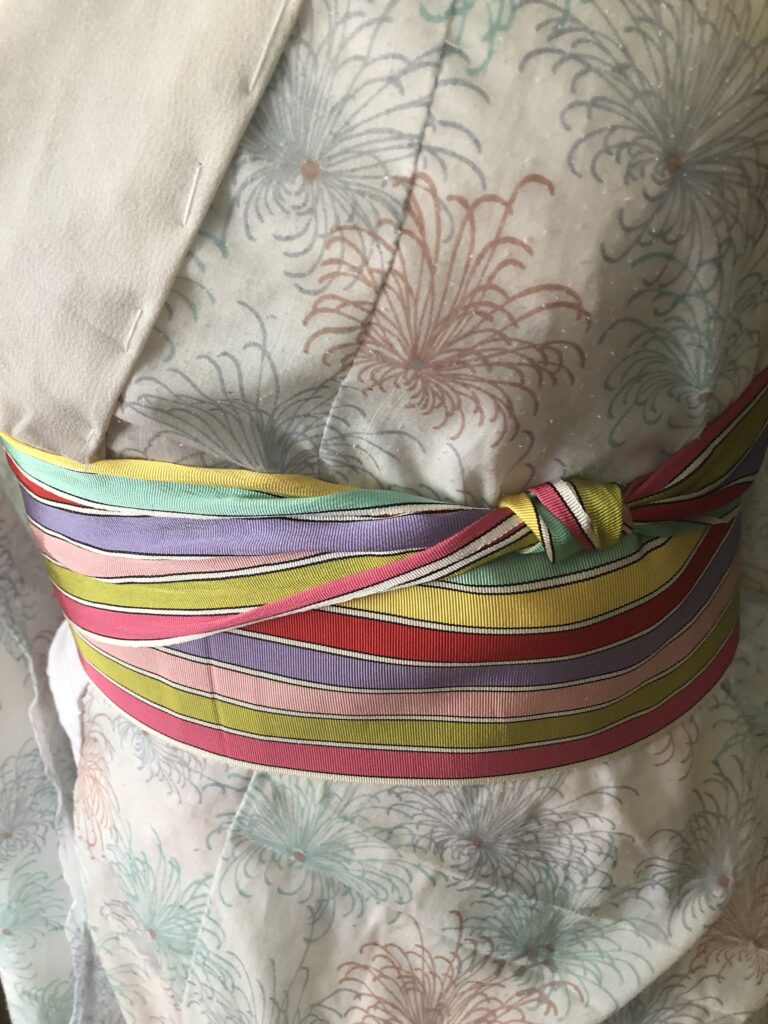
感覚なので、苦しくないゴロゴロしない方法でしてくださいね。
Please tie it in a way that does not make your body uncomfortable.
着物 kimono
着物の上にする伊達締めも長襦袢と同じ使い方です。
The datejime is used the same in kimono and nagajyuban(長襦袢).
着物前(長襦袢と同じ)
front (some as Nagajyuban)
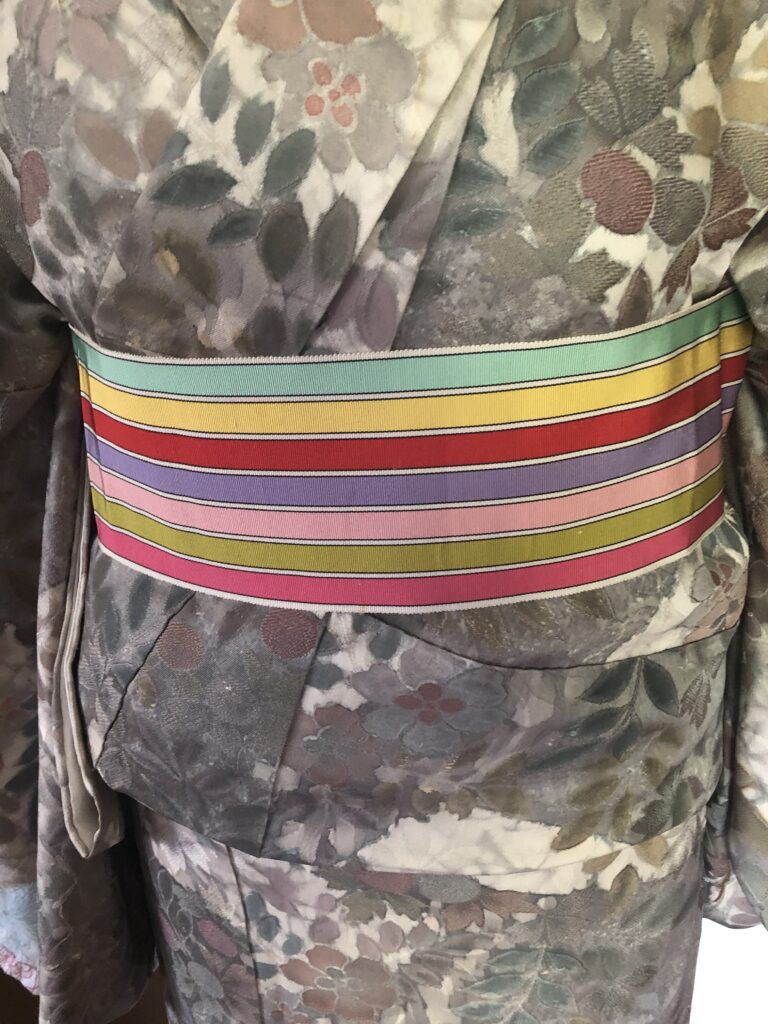
後ろ(長襦袢と同じ)
back(same as Nagajyuban)
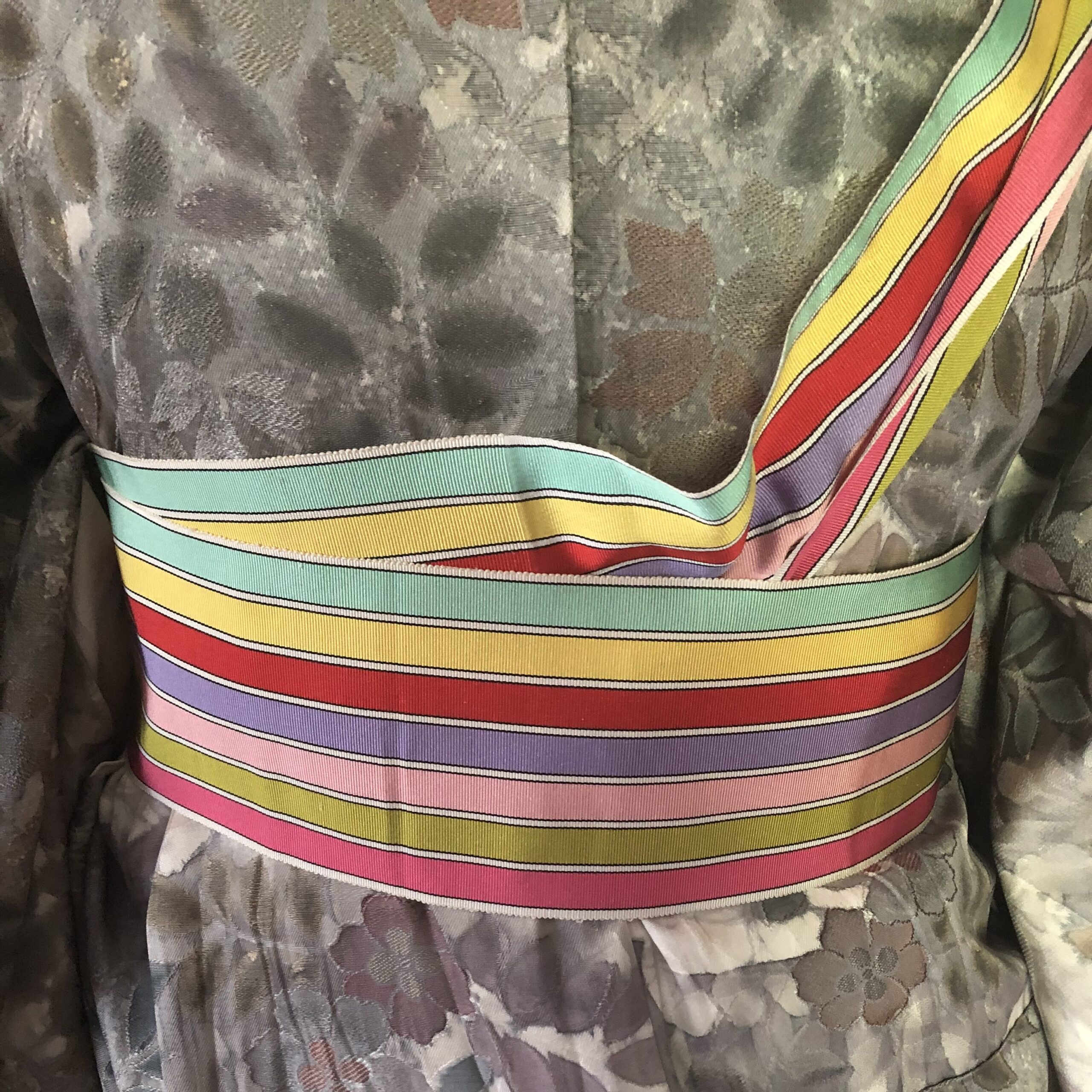
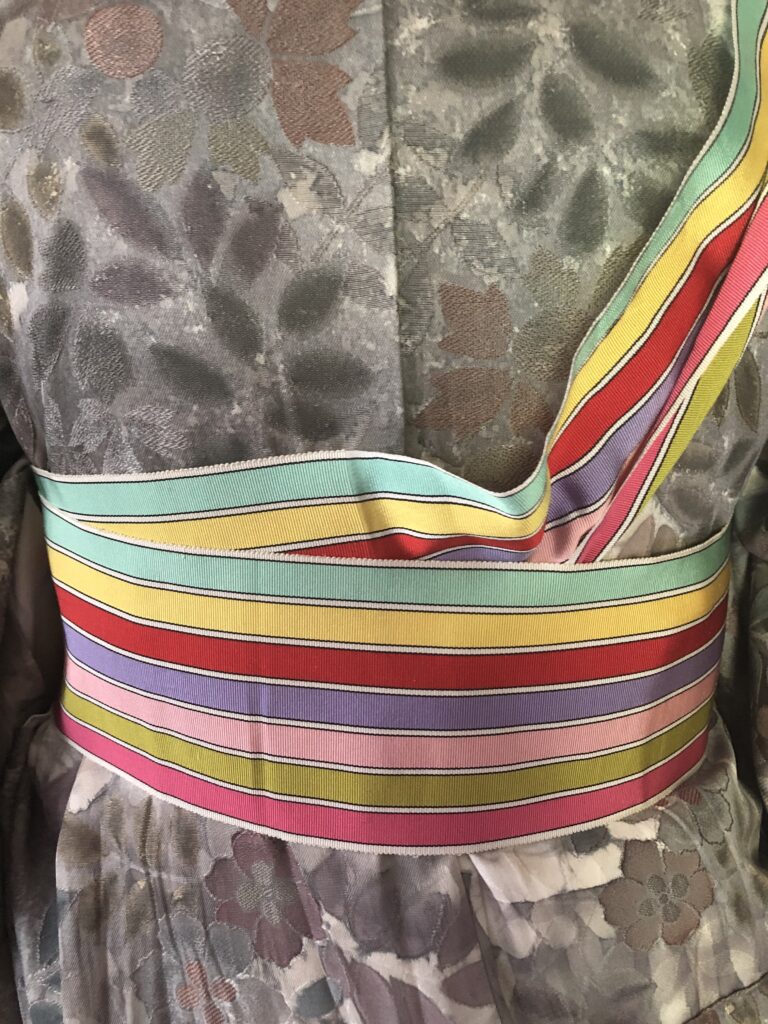
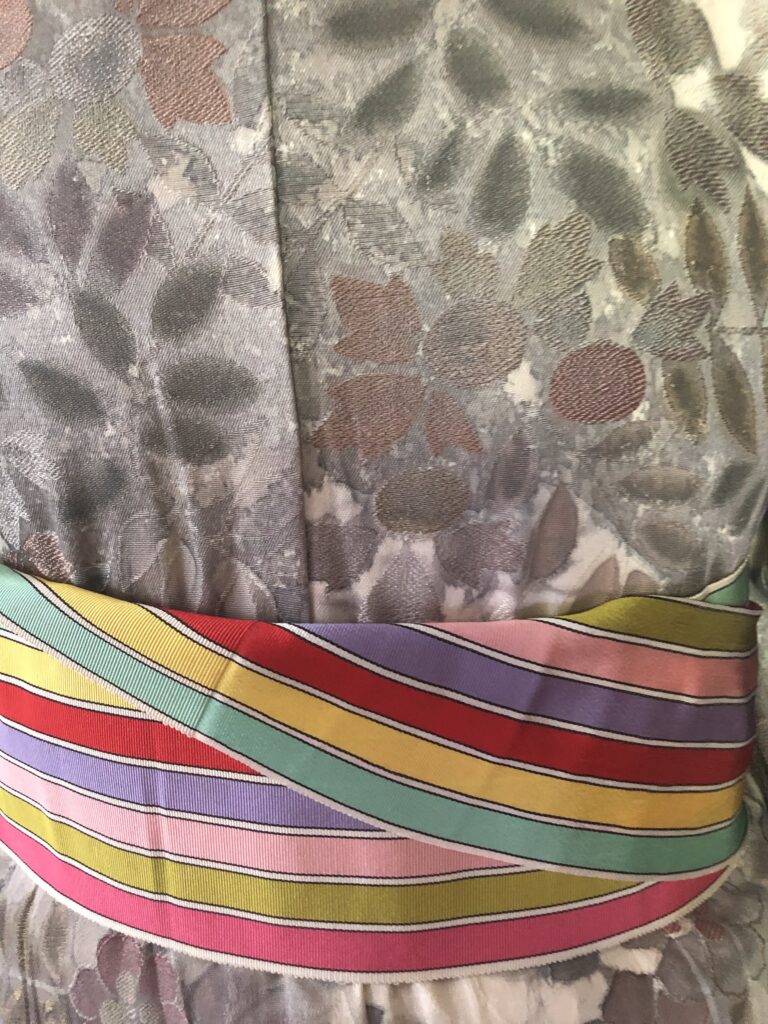
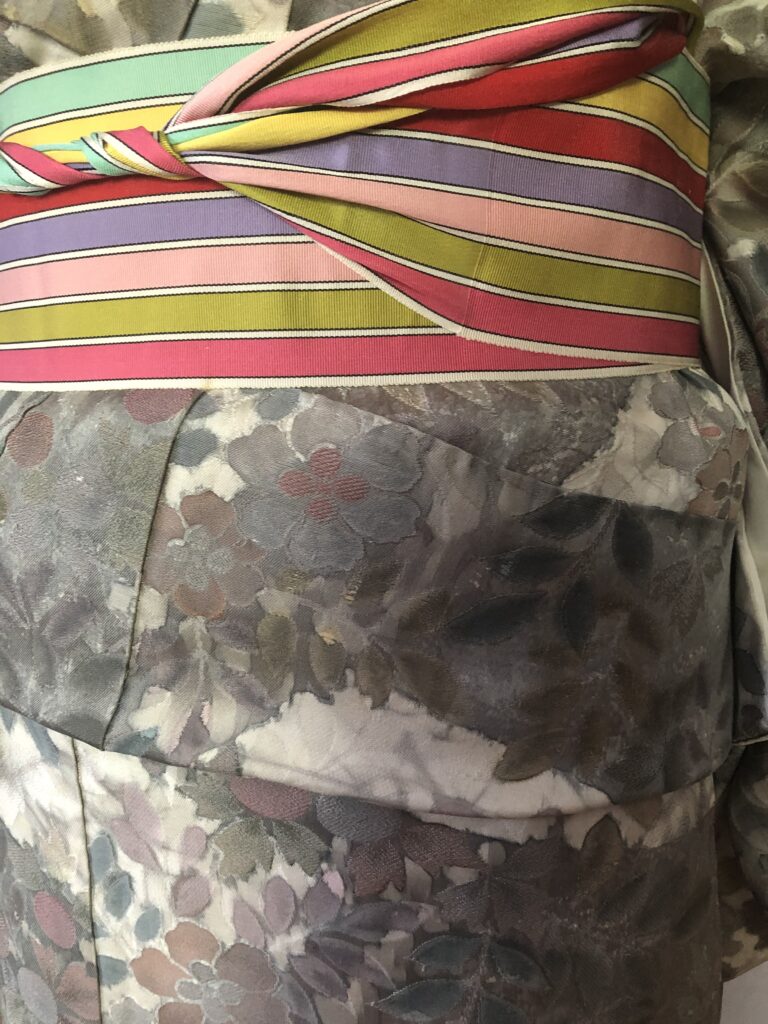
・着物のときはおはしょりがあるので、おはしょりを真っ直ぐにしたり、長さを調整するための布の収納する場所に使う方もいます。
There is an ohasyori(おはしょり)on kimono. Some people use datejime to adjust the length and shape of the ohasyori(おはしょり).
おはしょりが斜めになっています。
For example, the ohasyori(おはしょり)is tilted.
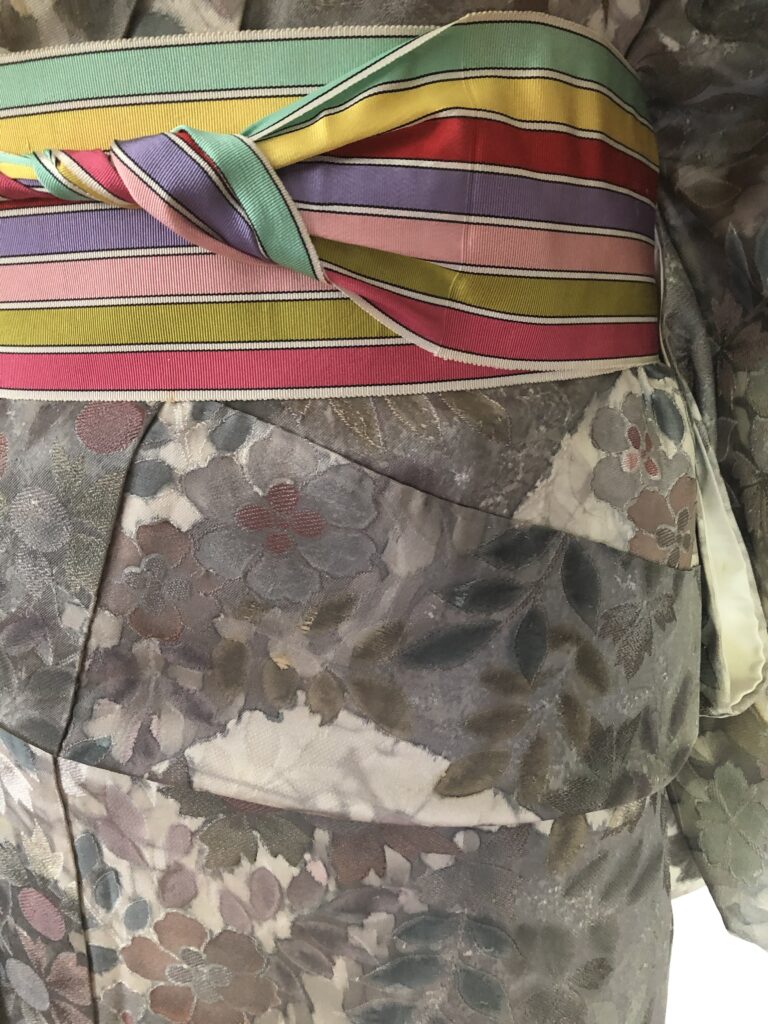
こんな風に真っ直ぐにしたいと思った時
I want to straighten ohasyori(おはしょり)
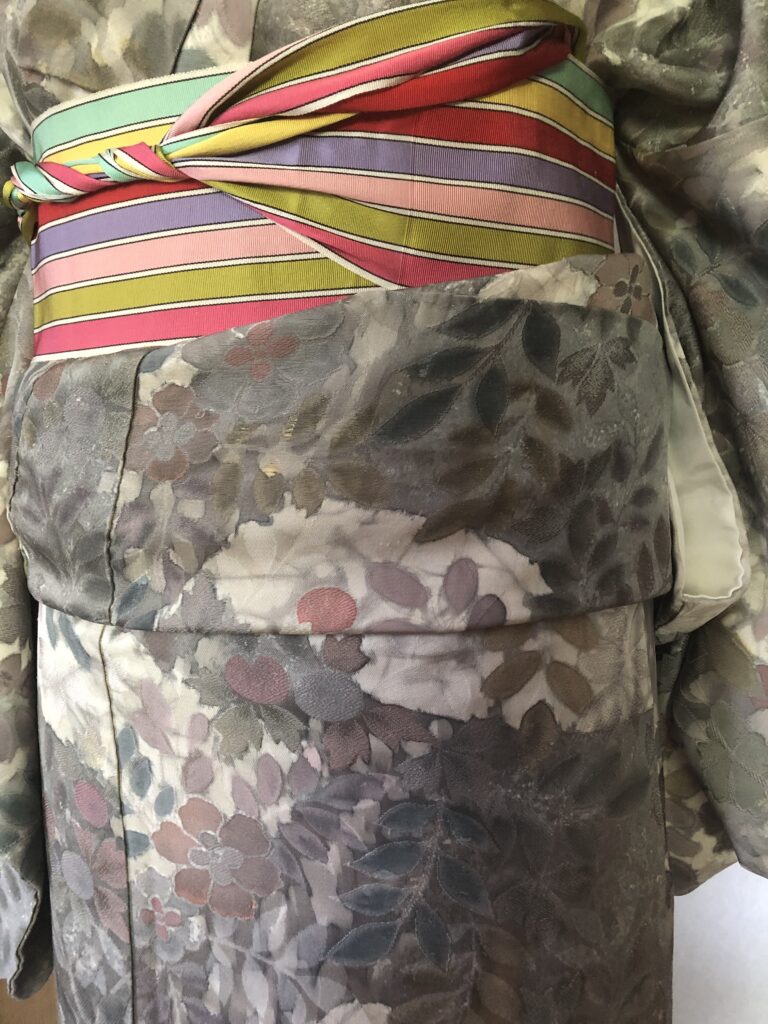
余った布を伊達締めと長襦袢の間に収納します。
I will store the rest of the ohasyori(おはしょり) in the datejime.
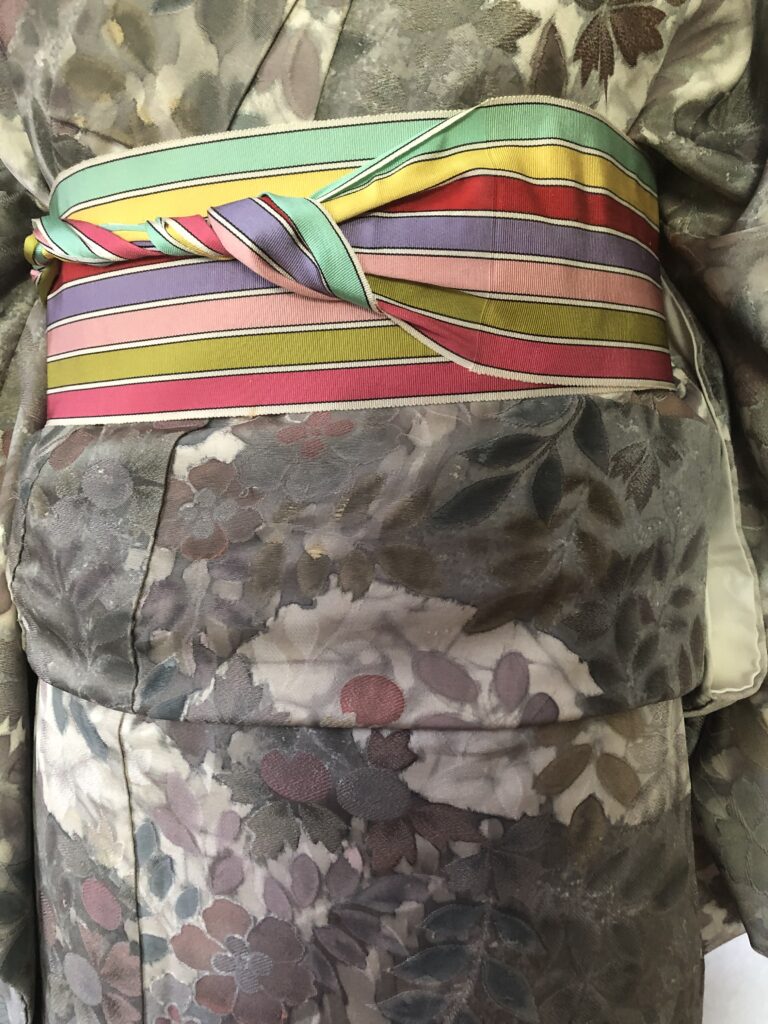
伊達締めは、衿元をおさえる大事な役目がありますが、見えないところなのでホントに自由です。
The role of the datejime is keep the collar. People around me can not see it hidden in a kimono, so please feel free to use it.
最後まで読んでいただきありがとうございました。
I am sorry for my poor English.
Thank you for reading through to end.
